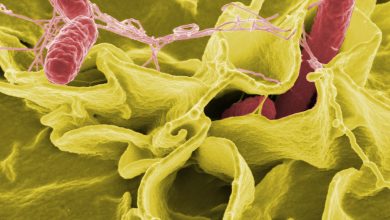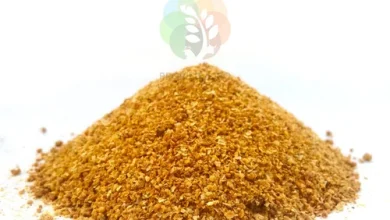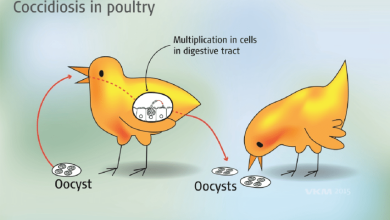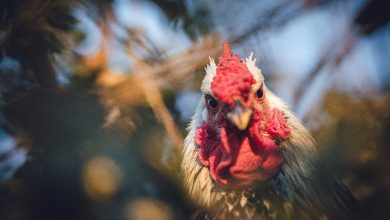Passive Immunity in Infectious Bursal Disease; Role of Maternally Derived Antibodies (MDA) on Active Immunization Programme
Dr. K.L. Revappa, Dr. S.K. Maini, Dr. Suresh Sharma, Vaccine Division, Vesper Pharmaceuticals, Soladevanahalli, Bengaluru – 560 107.
Infectious Bursal disease (IBD) is a viral infection, affecting the immune system of poultry. The disease is highly contagious, affects young chickens and is characterized by the destruction of the lymphoid organs, and in particular the bursa of Fabricius, where B-lymphocytes mature and differentiate. The target cell of virus is the B-lymphocyte in an immature stage, and the infection when not fatal, causes an immune-suppression in most cases temporary, the degree of which is difficult to determine. Direct losses due to IBD are linked to specific mortality, and depend on the dose and virulence of the virus strain, the age and breed of the birds, and the presence or absence of passive immunity. The indirect economic impact of the disease is also considerable, due to virus-induced immune-suppression and/or potential interactions between IBDV and other viruses, bacteria or parasites, (Van den Berg et al., 2000). Infectious Bursal disease is currently an international problem almost all countries of the world have encountered the incidence of the disease.
Humoral immunity plays a very important role in protecting the birds against Infectious Bursal Disease Virus (IBDV). There is a direct correlation between the level of neutralizing antibodies and protection, (Jack wood et al., 1999, Nakamura et al., 1994). High levels of neutralizing antibodies in the chicken block the virus infecting the bursa. With lower level of antibodies, sufficient virus is neutralized to prevent clinical disease. The role of the humoral immunity is also evident by the passive protection provided to young chicks by the maternally derived antibodies. (Against Bursal lesions, and immune-suppression). (Van den Berg and Meulemans 1991).
Inactivated vaccines are essentially used to produce high, uniform and persistent antibody titers in the hens prior to lay that have been vaccinated with a live virus or have been naturally infected through exposure to the virus on the farm.
(Cullen and Wyeth., 1976, Wyeth and Cullen., 1978, Wyeth and Cullen., 1979). These vaccines are administered by the subcutaneous or intramuscular route, at the age of sixteen to twenty weeks. Progeny of hens that have been vaccinated in this way have protective antibodies until the age of approximately 30 days. Howeve, the duration and uniformity of the immunity thus conferred upon chicks, will to a great extent, depend on the antigenic specificity of the virus present in the vaccine used to hyper-immunize the hens, (Box., 1989, Wyeth and Cullen., 1976, Wyeth et al., 1992). The chicks are thus protected during the period of susceptibility to the IBDV strains that only provoke immune-suppression. However, the chicks are not protected from other highly pathogenic strains that may inflict high mortality rates at later stages, (Van den Berg and Meulemans., 1991, Wyeth and Cullen., 1979).
Vaccination of breeders is based on a process called “hyper immunization.” This then results in high levels of circulating antibodies in the laying hens, resulting in high levels of passive antibodies being transmitted to the chick via the egg. The rate of transmission is proportional to the level of maternal antibodies; the higher the antibody titer in the breeder, the stronger the protection transmitted to the chick.
The uniformity of MDA is the direct result of vaccination program of the breeders. Breeders vaccinated with live and inactivated vaccines during their prime period of around 20 weeks of age are most likely to present with high and uniform MDA titers. Breeders vaccinated with only live vaccines are likely to show low and uneven MDA titers. Exposure to any challenge with field virus has positive influence on the MDA titers. Breeders at the end of their production cycle (60 weeks of age) are likely to have low and uneven MDA titers.
The decay rate of MDA in chicks; Fast growing birds like broilers have a fast and uniform MDA decay rate with a half-life of 3 – 3.5 days. Birds exhibiting a slow growth rate such as pullets of layers or breeders have a slow and uneven MDA decay rate with half-life of 5-6 days. The nutrition and environmental conditions also influence the rate of MDA decay.
An effective immunization program changes the birds from passively immune by MDA’s into actively protected bird through the development of its own antibodies. The correct timing of vaccination, taking into consideration the titers of MDA in chicks is critical in this operation. If the vaccine is applied too early, while the maternally derived antibodies titer is too high, the vaccine virus is neutralized and no protection can be expected. On the other hand, if the vaccine is applied too late, then the exposure to field virus and consequent disease outbreak may occur. Therefore the accurate identification of the window of opportunity is extremely important and here the half-life of maternal antibodies comes to picture.
All the attenuated IBD vaccines are susceptible to virus-neutralizing maternally-derived antibodies, which can totally neutralize them or delay their action. Serological monitoring is usually necessary to predict the optimal timing for the vaccination. Age at vaccination should be decided according to the level of and homogeneity (uniformity) of MDA present ;in the day old chicks, (Dewitt, 1999). Quantitative serological tests, like the virus neutralization test or the more commonly used ELISA test, evaluate antibodies levels in chicks (expressed in geometric mean titer (GMT) and calculate the optimal age for vaccination is rarely identical for all chickens of the same flock. One can therefore use mean values, which is acceptable if MDA titers are homogenous or increase the number of vaccine application if MDA titers are heterogenous. By serological monitoring a calculation of the MDA level at which the vaccine can break through is possible and the data to be used to schedule the vaccination program.
References
- Box P., (1989). High maternal antibodies help chickens beat virulent virus. World poult, 53: 17-19.
- Cullen G.A. and Wyeth P.J., (1976). Response of growing chickens to an inactivated IBD antigen in oil emulsion. Rec., 99: 418.
- Dewit J.J., (1999). Gumboro disease; optimizing vaccination. poult. Prod., 7(5): 19-21.
- Jackwood D.J.., Sommer S.E. and Odor E., (1999). Correlation of enzyme-linked immunosorbent assay titers with protection against infectious bursal disease virus. Avain Dis., 43(2): 189-197.
- Nakamura T., Otaki Y., Lin Z., Nunoya T., Hoshi S. and kato A., (1994). Direct correlation between the titre of infectious bursal disease virus VP2-specific antibody and protection. Avian Dis., 38: 257-255.
- Van den Berg T.P. and Meulemans G., (1991). Acute infectious bursal disease in poultry; protection afforded by maternally derived antibodies and interference with live vaccination. Avian pathl., 20(3): 409-421.
- Van den Berg T.P., Eterradossi N., Toquin D., and Meulemans G., (2000). Infectious bursal disease (Gumboro disease). Sci. tech. off. Int. epiz., 19(2) 527-543.
- Wyeth P.J. and Cullen G.A. (1976). Maternally derived antibody effect on susceptibility of chicks to infectious bursal disease. Avian pathol., 5:253-260.
- Wyeth P.J. and Cullen G.A., (1978). Transmission of immunity from inactivated infectious bursal disease oil emulsion vaccinated parent chickens to their chicks. Vet. Rec., 102:362-363.
- Wyeth P.J., Cullen G.A., (1979). The use of an inactivated infectious bursal disease oil emulsion vaccine in commercial broiler parent chickens. Rec., 104: 188-193.
- Wyeth P.J., Chettle N.J. and Mohepet A.R., (1992). Use of an inactivated infectious bursal disease oil emulsion vaccine in commercial layer chickens. Rec., 130: 30-32.




